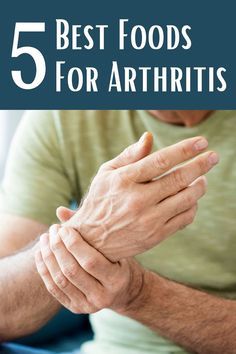Treatment for Arthritis: Managing Symptoms and Improving Quality of Life
Arthritis is a broad term that refers to more than 100 different types of joint diseases and conditions, affecting millions of people worldwide. The most common forms of arthritis include osteoarthritis (OA) and rheumatoid arthritis (RA). While there is no cure for arthritis, effective treatments can help manage symptoms, slow the progression of the disease, and improve the overall quality of life. Below, we explore the most common and effective treatment options for arthritis.
Understanding Arthritis
Arthritis primarily affects the joints, causing pain, swelling, stiffness, and reduced range of motion. It can also affect other parts of the body, such as the skin, eyes, lungs, and heart, especially in autoimmune forms of arthritis like rheumatoid arthritis.
Osteoarthritis: This is a degenerative condition where the cartilage between the joints wears down over time, leading to pain and stiffness.
Rheumatoid Arthritis: An autoimmune disease where the body’s immune system attacks the joint lining, leading to inflammation, pain, and eventually joint damage.
The treatment for arthritis depends on the type, severity, and the specific symptoms experienced by the patient.
1. Medications
Medication is often the first line of defense in managing arthritis symptoms. The goal is to reduce inflammation, manage pain, and prevent further damage to the joints.
Nonsteroidal Anti-Inflammatory Drugs (NSAIDs): Common over-the-counter options include ibuprofen and naproxen. These medications reduce inflammation and relieve pain.
Corticosteroids: These are powerful anti-inflammatory drugs that can be taken orally or injected directly into the affected joints to reduce inflammation and suppress the immune system.
Disease-Modifying Antirheumatic Drugs (DMARDs): For rheumatoid arthritis, DMARDs, such as methotrexate and hydroxychloroquine, help slow the progression of the disease and prevent joint damage.
Biologic Response Modifiers (Biologics): These are newer medications that target specific components of the immune system involved in inflammation. They are used to treat autoimmune forms of arthritis, such as RA, and include drugs like adalimumab (Humira) and etanercept (Enbrel).
Analgesics: Pain relievers such as acetaminophen can help manage pain but do not address inflammation.
Topical Treatments: Creams and ointments containing capsaicin, menthol, or NSAIDs can provide localized pain relief.
2. Physical Therapy and Exercise
Regular physical activity and targeted physical therapy are essential components of arthritis treatment. Exercise helps maintain joint flexibility, strengthens the muscles surrounding the joints, and improves overall mobility.
Range-of-Motion Exercises: These help maintain joint flexibility and reduce stiffness.
Strengthening Exercises: Building muscle strength around the affected joints can provide additional support and reduce strain.
Aerobic Activity: Low-impact aerobic activities such as swimming, walking, and cycling improve cardiovascular health and overall stamina without putting too much pressure on the joints.
Occupational Therapy: This involves working with a therapist to learn how to perform daily activities in ways that reduce strain on the joints and minimize pain.
3. Lifestyle Modifications
Making adjustments to daily habits can have a significant impact on managing arthritis symptoms.
Weight Management: Excess weight puts additional pressure on weight-bearing joints, such as the hips and knees. Losing weight can reduce pain and slow the progression of osteoarthritis.
Healthy Diet: A diet rich in anti-inflammatory foods, such as fruits, vegetables, omega-3 fatty acids (found in fish like salmon and flaxseeds), and whole grains, can help manage inflammation. Some people with rheumatoid arthritis benefit from a Mediterranean diet, which is rich in these anti-inflammatory nutrients.
Assistive Devices: Canes, braces, and other assistive devices can help reduce strain on joints and improve mobility. Specially designed tools can make daily tasks easier for people with arthritis.
Proper Footwear: Well-cushioned, supportive shoes can reduce stress on joints and help with balance.
4. Complementary Therapies
Many people with arthritis find relief through complementary therapies that can be used alongside traditional treatments.
Acupuncture: This ancient Chinese practice involves inserting fine needles into specific points on the body to reduce pain and improve circulation. Some people with arthritis report significant pain relief from acupuncture.
Massage Therapy: Regular massages can reduce muscle tension, increase circulation, and promote relaxation, which may help alleviate arthritis symptoms.
Heat and Cold Therapy: Applying heat can reduce stiffness and improve circulation, while cold therapy helps reduce inflammation and numb pain.
Supplements: Some people find relief from arthritis symptoms with supplements such as glucosamine and chondroitin, turmeric, and fish oil. However, it's important to discuss these with a healthcare provider before starting, as they may interact with other medications.

5. Surgery
When conservative treatments fail to relieve severe arthritis symptoms, surgery may be necessary. Surgical options are typically considered when arthritis leads to significant pain and disability, or when there is damage to the joints that cannot be corrected through other treatments.
Joint Replacement Surgery (Arthroplasty): This involves replacing a damaged joint with a prosthetic one, commonly performed on the knees and hips.
Joint Fusion: For smaller joints, such as those in the fingers or wrists, joint fusion surgery may be performed to reduce pain and restore stability.
Arthroscopic Surgery: This minimally invasive surgery is used to remove loose cartilage, repair damage, or clean out the joint space in cases of osteoarthritis.











